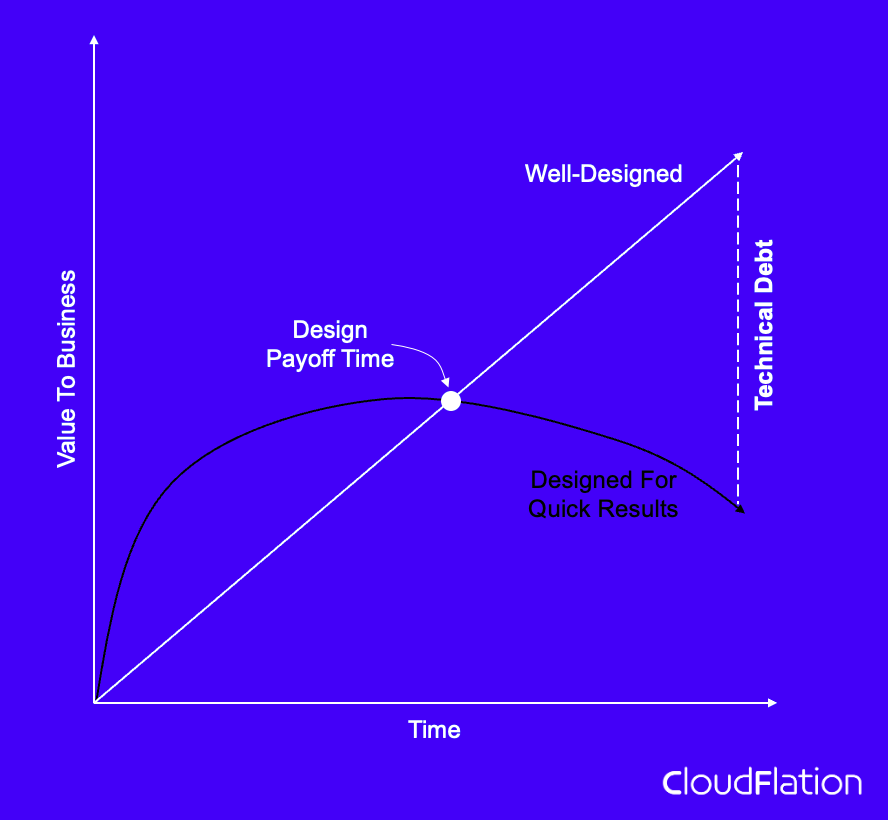Think of technical debt like a financial debt – it’s a trade-off made in the short-term for a benefit in the long-term. In technology, it refers to shortcuts taken in the design and development of a system, leading to increased costs down the line.
Taking shortcuts in cloud computing to satisfy quick demands may seem like a quick fix for immediate needs, but in the long term, they can lead to significant technical debt and major consequences.
Technical debt refers to the compromises made in design and development that result in increased costs and reduced efficiency down the line. In cloud computing, this can include subpar solutions for scalability, security, or performance.
For example, choosing a cheap cloud storage solution may provide short-term satisfaction, but as your data grows, the solution may become increasingly cumbersome and costly to maintain. Or, opting for a lower security solution may save money in the short-term, but a data breach could result in much larger expenses and damage to your reputation.
It’s important to consider the long-term implications of technical debt in your cloud strategy. While shortcuts may provide temporary relief, they can lead to costly consequences in the future.
To avoid technical debt, prioritize proper planning and design of your cloud infrastructure. This may require more time and effort upfront, but it will pay off in the long run with a more efficient and secure setup.
Don’t let short-term satisfaction lead to long-term consequences – take control of your technical debt in the cloud!

